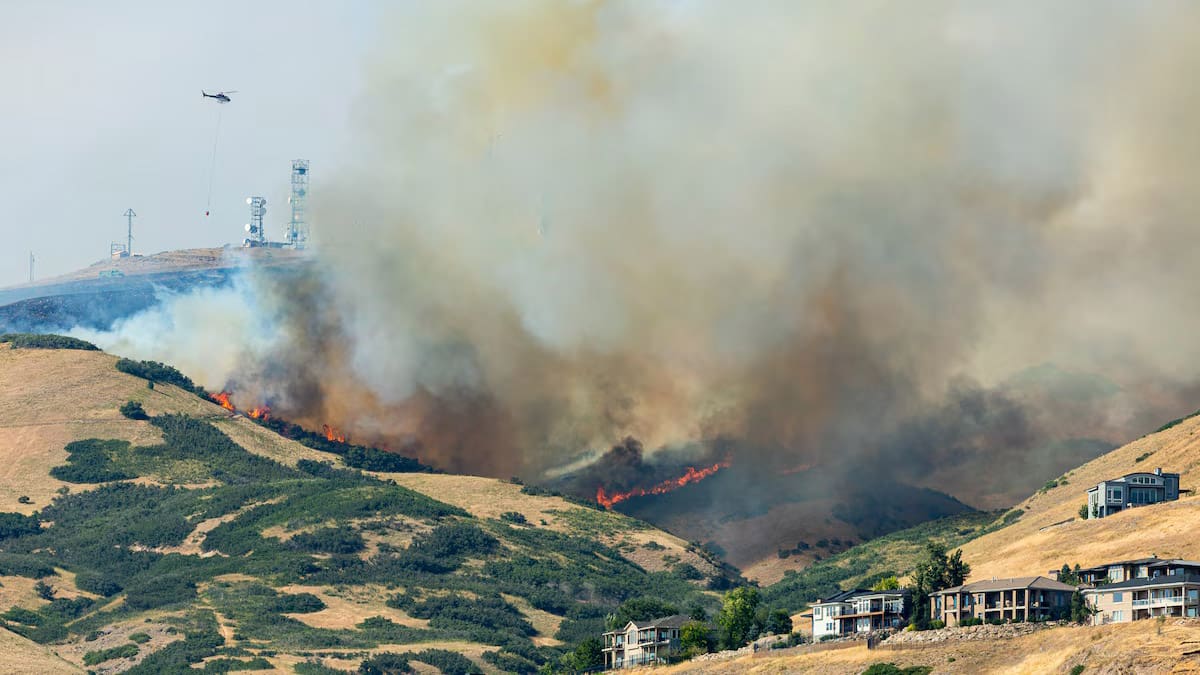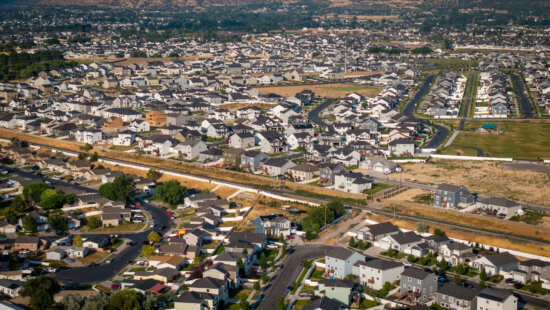Police & Fire
Despite some rain on Utah’s horizon, the rest of summer looks hot, dry and fire-prone

Photo: Isaac Hale | AP
By: Kyle Dunphey, Utah News Dispatch
July ended with a bang in Utah, with almost 90 new wildfires started since July 21, a handful of days with triple-digit temperatures, little precipitation and smoky skies.
Unfortunately, the Beehive State should expect more of the same for August.
Most of the Mountain West, including Utah, is experiencing abnormally dry conditions. Despite entering the summer with very little, if any, drought in the area, the last three months have been hot and dry. Parts of western Utah are now experiencing moderate drought and meteorologists say those conditions could intensify heading into the fall.
According to the National Weather Service’s outlook, Utah will likely see above-average temperatures for the first couple weeks of August — some of the state could experience above normal precipitation, too, but heading into late summer and early fall, much of Utah will see a continuation of hot, dry weather.
“We may see a few monsoon surges here and there, but we are expecting a weaker monsoon overall,” said Julie Cunningham, a meteorologist for the National Weather Service in Salt Lake City. “So, we can expect above normal temperatures and below normal precipitation, in general, heading into early fall,” said Cunningham.
And hot, dry weather is favorable for wildfires. On Thursday, the Great Basin Coordination Center, an interagency group that includes the Bureau of Land Management, Forest Service and state agencies, released its seasonal outlook for August through November. For northwestern Utah, fire conditions are expected to remain above normal.
That goes for the northwestern U.S., too, which means the smoke plaguing northern Utah could stick around for much of August. On Thursday, the air quality for Salt Lake County veered into the unhealthy range, with high levels of ozone and moderate levels of particulate pollution.
Most of that bad air stems from large fires in California and Oregon, like the Battle Mountain Complex, Falls, Lone Rock, Durkee or Park fires, all of which are currently burning at over 100,000 acres. At over 390,000 acres, the Park fire has become the fifth largest in California history.
Smoke can be hard to predict, but the National Weather Service says that as long as there are large fires in the northwestern U.S. and western winds, there will likely be some haze in the Salt Lake Valley.
“It’s just that time of year, where we’re going to be seeing smoke, especially as those wildfires develop,” said Cunningham.
That could fluctuate depending on shifting winds or rain. The National Weather Service says the state could see a monsoon surge over the next week, starting on Friday in southern Utah. The eight to 14 day outlook forecasts precipitation slightly above normal levels, but those storms can bring dry lightning, which the weather service defines as lightning strikes in a storm with less than one-tenth of an inch of rain. Lightning is responsible for starting at least 150 fires in Utah this year.
Overall, Utah has seen 706 fires in 2024, burning over 43,000 acres across the state. At least 490 were human-caused, which is a higher percentage than years past. Though there are currently 10 large fires burning in Utah, crews have made progress containing them. They are as follows:
- The Little Twist Fire in Fishlake National Forest near Beaver, which was started on June 13. It’s currently burning 5,367 acres and is 85% contained.
- The Silver King Fire burning outside of Marysville in Piute County, the largest in Utah this year, burning 18,222 acres and 88% contained.
- The Speirs Fire near Flaming Gorge Reservoir, burning 715 acres and 97% contained.
- The Sandhurst Fire, which burned 207 acres outside of Salt Lake City and prompted the evacuation of homes near Ensign Peak. It is now 100% contained, and fire officials say it was sparked by power transmission equipment.
- The Clarks Fire in Box Elder County, burning 358 acres and 55% contained.
- The Spring Hollow Fire in Duchesne County, burning 165 acres and 0% contained.
- The Third Canyon Fire in Iron County, burning 731 acres and 92% contained.
- The Dry Wash Fire in Sevier County, now 100% contained after burning 226 acres.
- The Sheep Rock Fire near Interstate 15 outside of Beaver, burning almost 75 acres and 0% contained.
- The East Canyon Fire near the Utah-Colorado border in Grand County, now 100% contained at 16 acres.



















